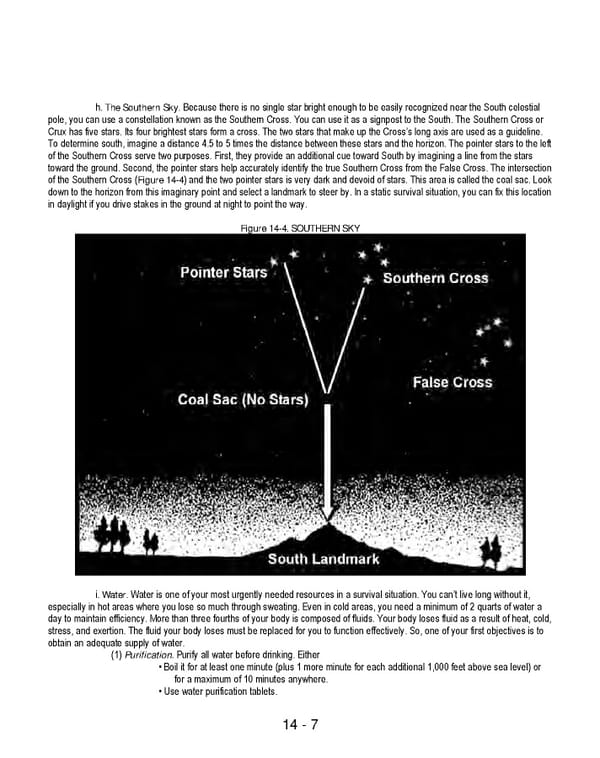14 - 7 h. The Southern Sky. Because there is no single star bright enough to be easily recognized near the South celestial pole, you can use a constellation known as the Southern Cross. You can use it as a signpost to the South. The Southern Cross or Crux has five stars. Its four brightest stars form a cross. The two stars that make up the Cross’s long axis are used as a guideline. To determine south, imagine a distance 4.5 to 5 times the distance between these stars and the horizon. The pointer stars to the left of the Southern Cross serve two purposes. First, they provide an additional cue toward South by imagining a line from the stars toward the ground. Second, the pointer stars help accurately identify the true Southern Cross from the False Cross. The intersection of the Southern Cross (Figure 14-4) and the two pointer stars is very dark and devoid of stars. This area is called the coal sac. Look down to the horizon from this imaginary point and select a landmark to steer by. In a static survival situation, you can fix this location in daylight if you drive stakes in the ground at night to point the way. Figure 14-4. SOUTHERN SKY i. Water. Water is one of your most urgently needed resources in a survival situation. You can’t live long without it, especially in hot areas where you lose so much through sweating. Even in cold areas, you need a minimum of 2 quarts of water a day to maintain efficiency. More than three fourths of your body is composed of fluids. Your body loses fluid as a result of heat, cold, stress, and exertion. The fluid your body loses must be replaced for you to function effectively. So, one of your first objectives is to obtain an adequate supply of water. (1) Purification. Purify all water before drinking. Either • Boil it for at least one minute (plus 1 more minute for each additional 1,000 feet above sea level) or for a maximum of 10 minutes anywhere. • Use water purification tablets.
 Ranger Handbook Page 254 Page 256
Ranger Handbook Page 254 Page 256